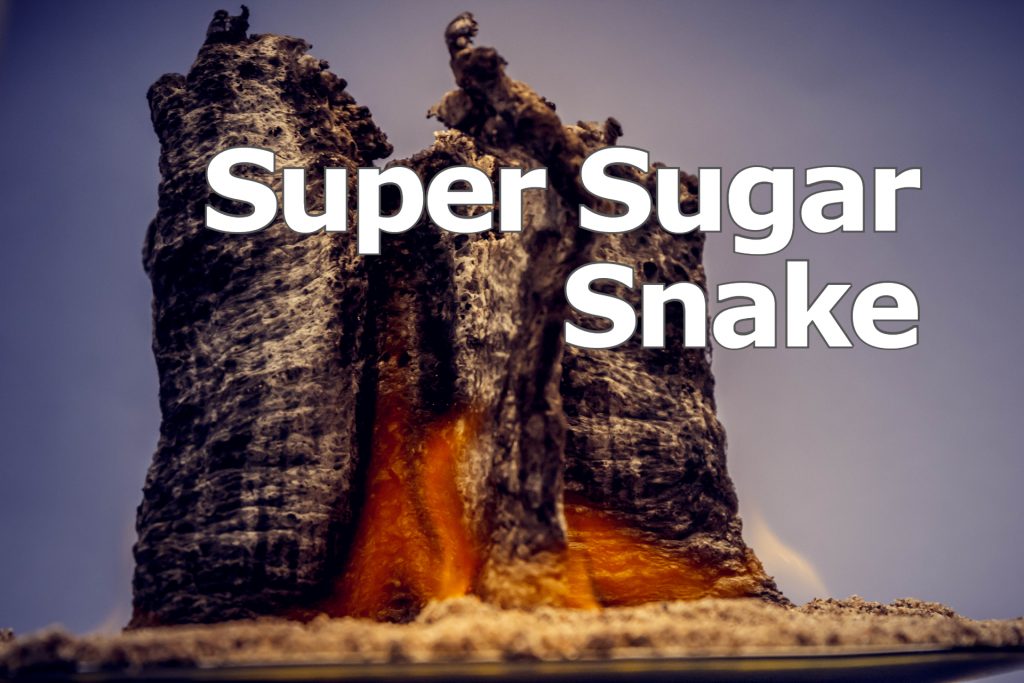Create this amazing sugar snake with some simple household chemicals. Watch it grow into a gigantic long snake.

This activity needs adult supervision
Ingredients:
- Icing sugar
- Bicarb soda
- Methylated spirits
Equipment:
- Long matches or a stick lighter
- Dry sand
- Disposable aluminum tray
- Tablespoon
- Teaspoon
- Cup
- Spoon
Method
- Mix 4 tsp of icing sugar with 1 tsp of baking soda
- Fill the aluminum tray with sand and create a small mound in the middle.
- Make an indent in the middle of the mound.
- Pour methylated spirits on the mound and in the indentation.
- Make sure that the sand is well soaked.
- Spoon your sugar and baking soda mix into the center of the mound.
- Ask and adult to carefully light the sand near the sugar mixture.
- The sugar and baking soda mix will begin to bubble and turn black.
- As this mixture burns the snake begins to grow and take shape.
A snake will begin to form after a couple minutes and can continue to burn for over 20 min.
Be patient, it is a slow process
The super sugar snake is the product of three chemical reactions that are all dependent on heat.
- The reactions occurs when sugar burns in the presence of oxygen. This produces carbon dioxide gas and water vapor. This pushes more of the sugar/baking soda mixture upwards.
- The extra sugar heats up but doesn’t have access to any oxygen. Instead of burning it produces solid carbon and more water vapor. The solid carbon gives the snake shape and its black color.
- The baking soda decomposes in the heat producing solid sodium carbonate, carbon dioxide gas and water vapor.
These three reactions produce both the solid components of the snake and hot gases that expand and inflate the snake up and out of the sand bowl. The sand evenly distributes the heat to the icing sugar and baking soda. This ensures a slow, steady burn enabling the growth of a long sugar snake.
This activity needs adult supervision and should not be attempted in windy conditions

